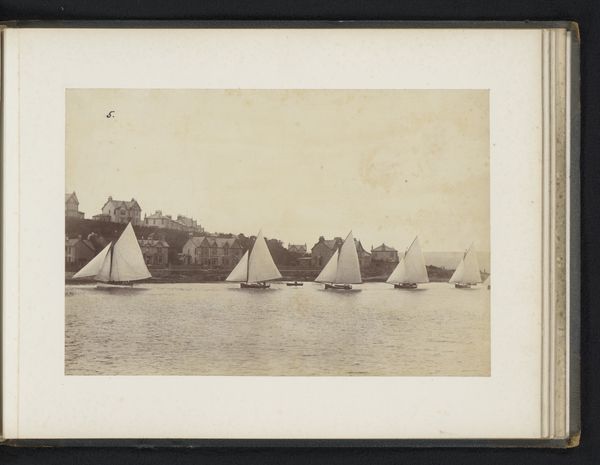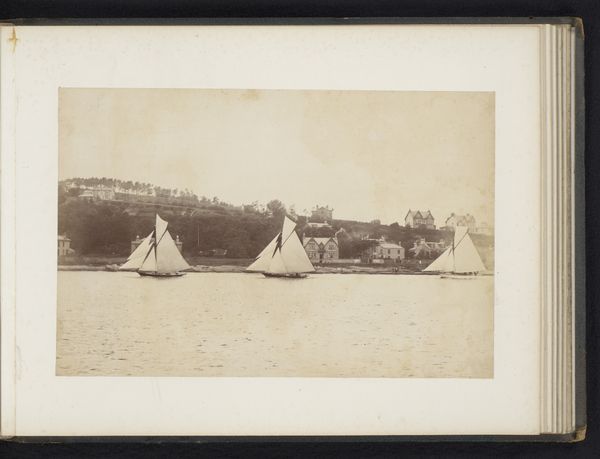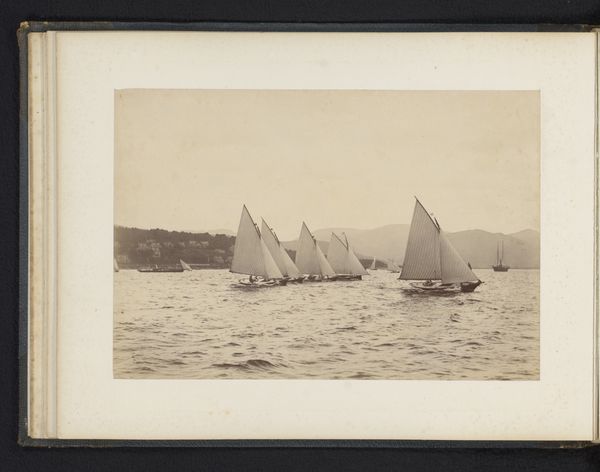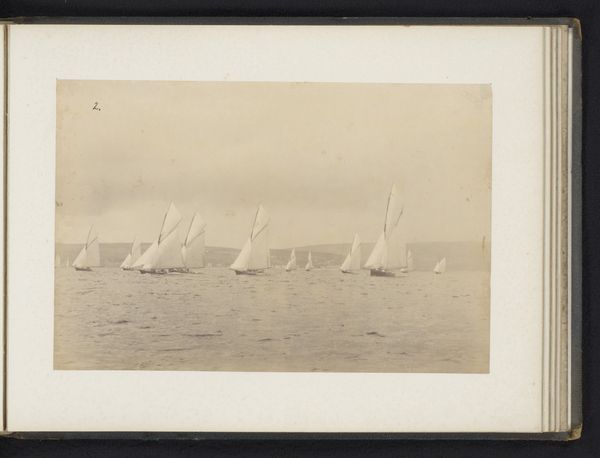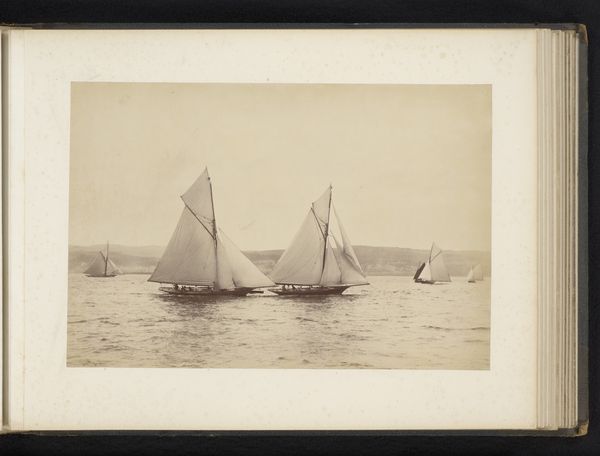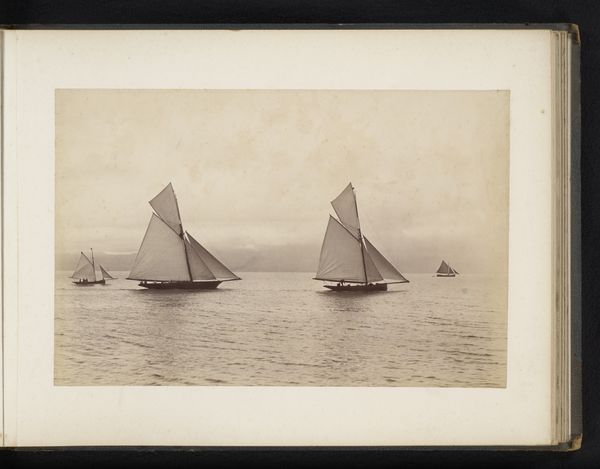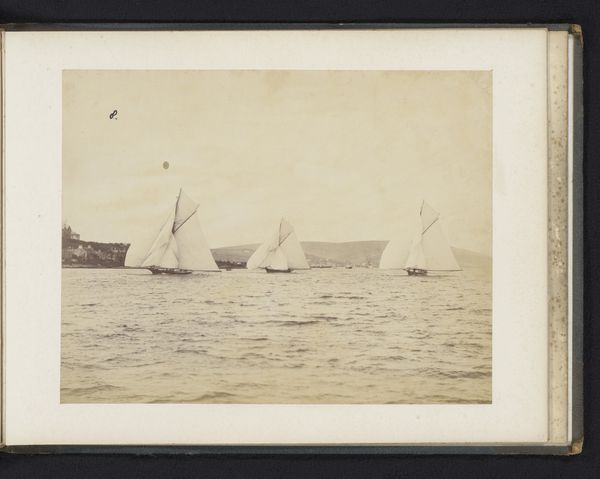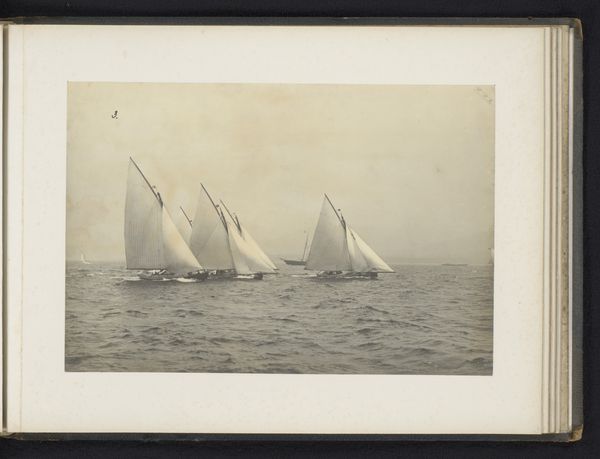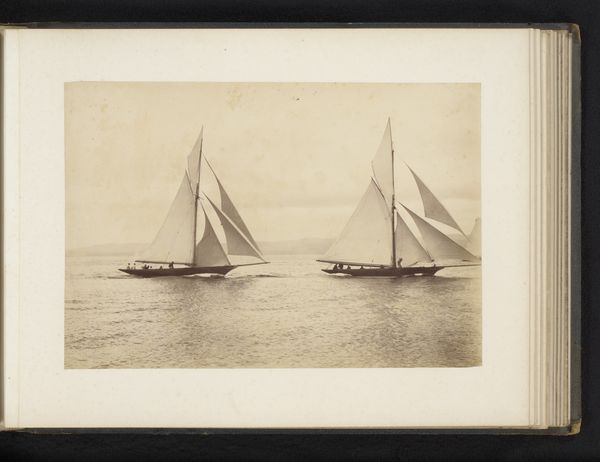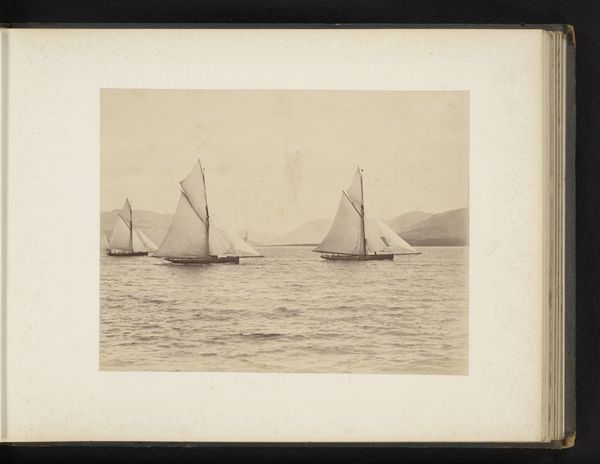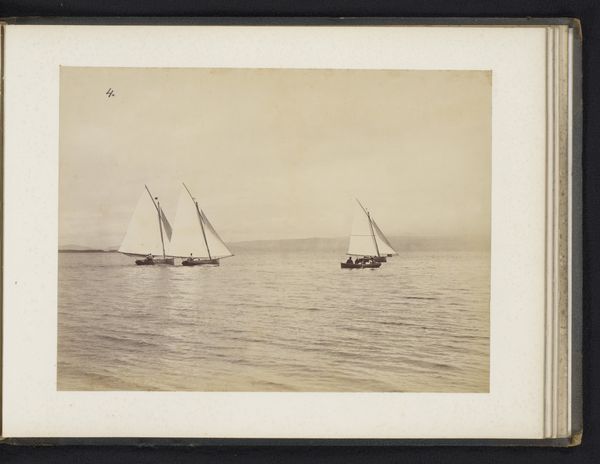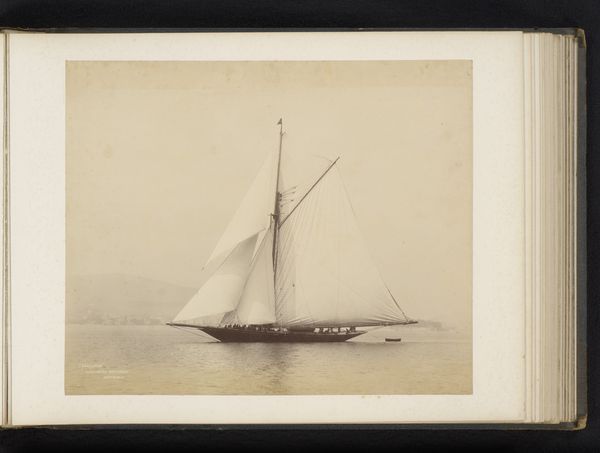
Zeilschepen Yvonne, Doris en Darthula te water met op de achtergrond bebouwing c. 1880 - 1900
0:00
0:00
photography, gelatin-silver-print
#
still-life-photography
#
pictorialism
#
landscape
#
photography
#
gelatin-silver-print
#
cityscape
Dimensions: height 182 mm, width 284 mm
Copyright: Rijks Museum: Open Domain
Editor: This is a gelatin-silver print from between 1880 and 1900, titled "Zeilschepen Yvonne, Doris en Darthula te water met op de achtergrond bebouwing," showing sailboats on the water against a cityscape. I'm really struck by the almost ethereal quality of the image, how soft and dreamy it is. What's your take on it? Curator: It’s crucial to remember the social and economic context in which this image was produced. Consider the labor involved – from the industrial production of gelatin-silver plates to the photographer's own skilled work. How did these photographic materials and processes shape the final aesthetic? Editor: That's interesting, I hadn't thought about the process so deeply. I was just appreciating the picture, but how would you say it impacts how we see the boats themselves? Curator: These aren’t just any boats; they're luxury items, representing leisure and wealth during the late 19th century. Photography at this time, particularly pictorialism, often sought to emulate painting, elevating itself from mere documentation to art. This connects to debates around the value of craft versus “high art,” doesn’t it? Does the image challenge or reinforce social hierarchies? Editor: So, by consciously mimicking painting through the soft focus and tonal range of the gelatin-silver process, is the photographer essentially trying to legitimize photography as a respectable art form that only certain people can enjoy? Curator: Precisely. The very materiality and technique point to a complex negotiation of class, labor, and artistic aspiration. It’s more than just a pretty picture; it's a product of its time. Editor: I’m going to have to think about that relationship between the materials, process, and subject a bit more, but I think I’m starting to see the bigger picture now. Thank you!
Comments
No comments
Be the first to comment and join the conversation on the ultimate creative platform.
